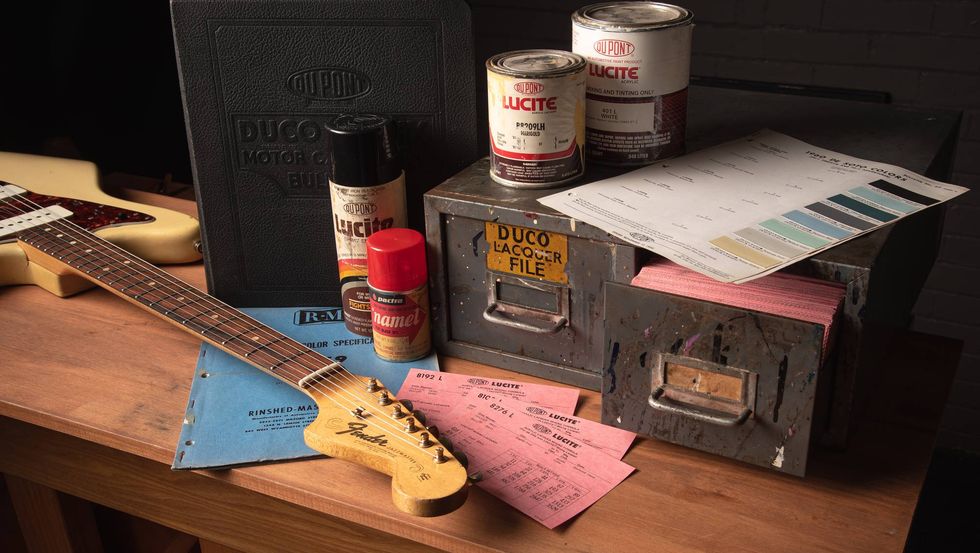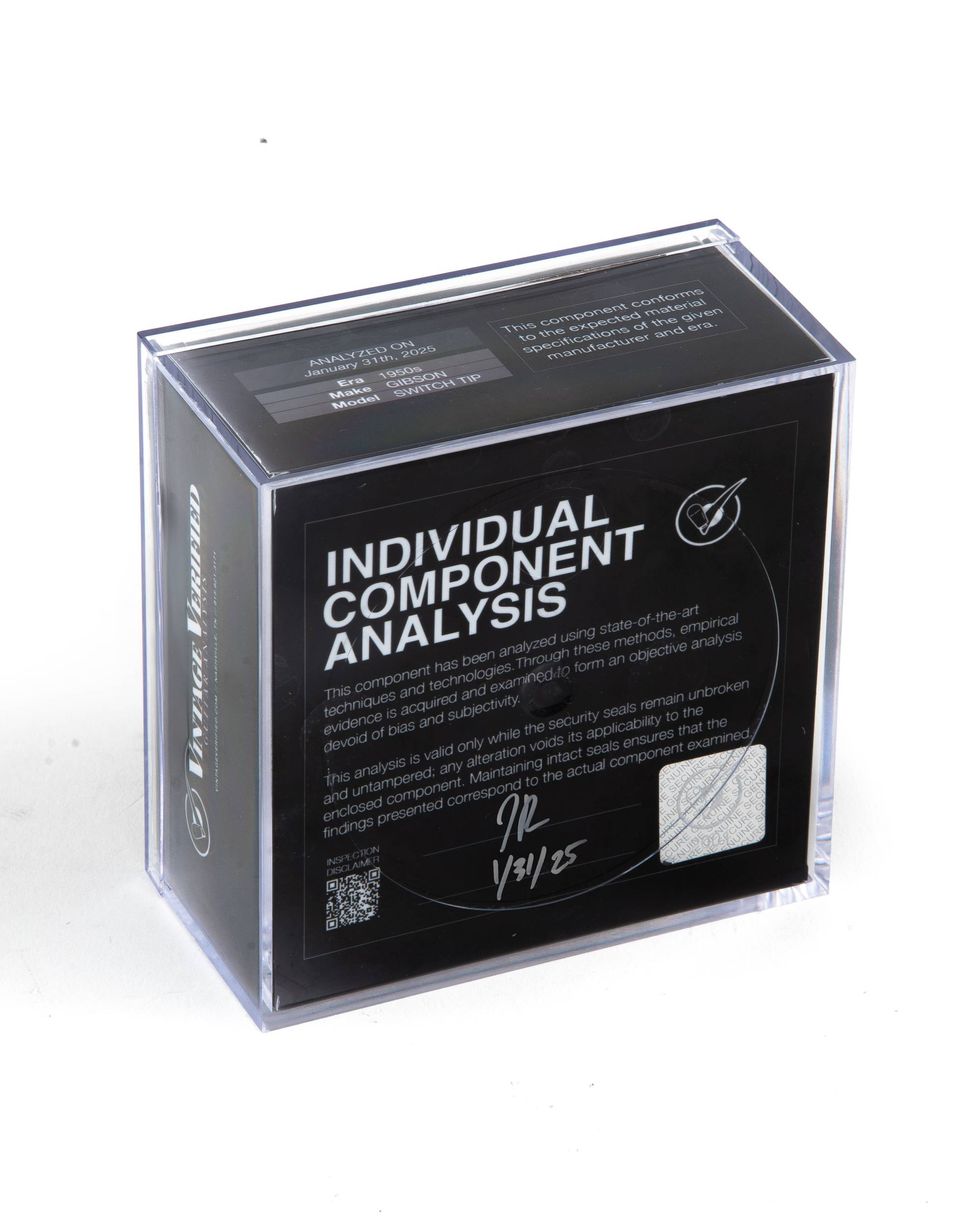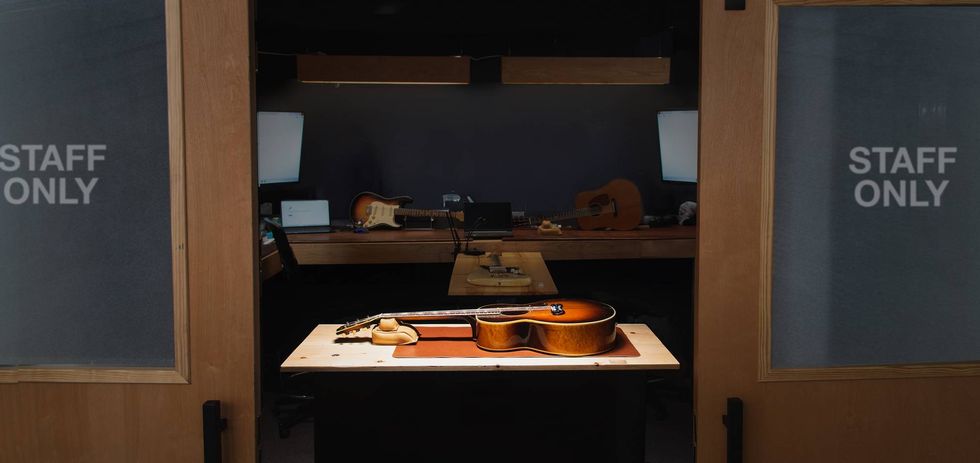Rhythm: Fender Champ w/ Telecaster, Blonde
Lead 1: Gibson LP, DI, Delay w/ Shimmer
Lead 2: Gibson LP, DI, Plexi w/ Cali engaged
RatingsPros:Great sounding effects in a super-compact, plug-and-play format. Expanded effects functionality. New effects loop. Cons: DI tones could be more natural. Street: $299 Tech 21 FlyRig 5 V2 tech21nyc.com | Tones: Ease of Use: Build/Design: Value: |
If the name didn’t tip you off, Tech 21’s Fly Rig was designed first and foremost for the travelling musician. It’s a great idea: a marriage of the company’s popular and reliable SansAmp voices with a few colorful and essential effects in a slim, compact pedal not a whole lot bigger than your shoe. Just throw it in a bag, jump in a car or a plane with your favorite axe, and those question marks at your backline gig—not to mention your luggage—get much easier to manage. Impressively, Tech 21 has managed several significant and useful improvements on this simple-but-effective formula in the new Fly Rig 5 V2.
The V2 is as sleek and slim as its predecessors. There’s five footswitchable modes: plexi and blonde voiced SansAmp voices, a 12 dB boost, delay, and reverb. There’s also a tuner, a speaker-emulating XLR output with ground-lift, an effects loop, and tap tempo functionality. The 13 knobs along the top light up when their respective effect is engaged. Reverb has a knob for effects mix and a virtual hall size button. Delay has level, repeat and time controls, and knobs for drift (modulation) and eighth-note divisions. The blonde SansAmp voice features level and drive controls and a 3-band EQ. The plexi SansAmp voice uses a simpler array of EQ tone and level and drive knobs, as well as a new “Cali” button that bumps the midrange and gain and replicates some of the qualities of vintage Mesa/Boogies and hot-rodded Marshalls. Boost level requires just a single knob.
Raising the Bar, Again
It’s pretty easy to dive right into the V2 and get results with just about any guitar and amp. With a Gibson Les Paul and a Fender Champ, the plexi voice and Cali mode turned the little amp into a monolithic grind machine that sounded way bigger than its 5 watts. Even the pick attack felt cracking and vicious. But the real beauty of the Fly Rig 5 is how easily you can switch between this voice and the more classic-rock-oriented sounds of the blonde voice, which can range to subtle smoky-and-sultry overdrive to more growling mid-gain crunch.
Further navigating the Fender-inspired blonde voice’s range reveals super responsive EQ controls with a range that feels much more expansive than the average stompbox overdrive EQ. You can also summon more blackface-like clean tones by rolling back the mids. But crank up the drive and a Telecaster’s bridge pickup can just as easily churn up raw James Gang-style swagger. The blonde voice is dynamically responsive at these levels, too, and rolling off guitar volume cleans up the output without sacrificing body.
Delay and reverb effects are more flexible and easy to use in the V2 thanks to a few simple improvements. The V1’s reverb was embedded in the SansAmp mode, so you were stuck with choosing to pair the two or go without one. In the V2, the reverb has a dedicated footswitch. It also has a size option that increases virtual room dimensions when engaged. The tape-inspired delay, meanwhile, now has a dotted eighth-note option, which makes it easy to coax precise U2-style rhythmic delay riffs from the effect—especially with the tap tempo function in the mix.
The V2’s effects work beautifully together. But the effects loop also helps this new version play nice with other outboard effects, which was not necessarily a strong suit of the V1. In the V2, the loop is situated after the SansAmp sections of the circuit and before the delay and reverb effects, but you can also use the efffcts loop to route the onboard delay/reverb to an amplifier’s FX loop.
The Verdict
The plug-and-play simplicity of the Fly Rig is its greatest asset, and the V2 enhances those options significantly. Improvements like the effects loop and independent and expanded effects controls are genuinely player- and perfomance-centric. And while the $299 price tag is a little steeper than the previous model, the bounty of extras makes the practical sum greater than its dollar cost, which is still a pretty great deal. It will work well with your entire guitar collection, and it’s a solid choice for both smaller and larger amplifiers. And while the best tones come from pairing the FlyRig with an amplifier, you can also run the unit direct with reliably solid results. It’s also a good match for a DAW when using the speaker simulation. Bottom line: The Fly Rig V2 is a great, and much improved, option for the guitarist on the go.









![Rig Rundown: John 5 [2026]](https://www.premierguitar.com/media-library/youtube.jpg?id=62681883&width=1245&height=700&quality=70&coordinates=0%2C45%2C0%2C45)




![Rig Rundown: Russian Circles’ Mike Sullivan [2025]](https://www.premierguitar.com/media-library/youtube.jpg?id=62303631&width=1245&height=700&quality=70&coordinates=0%2C0%2C0%2C0)






